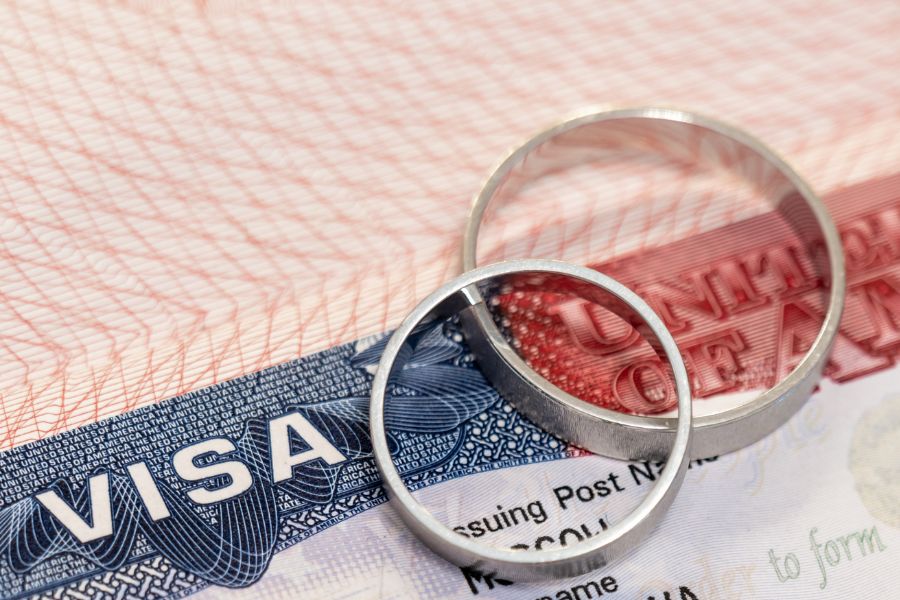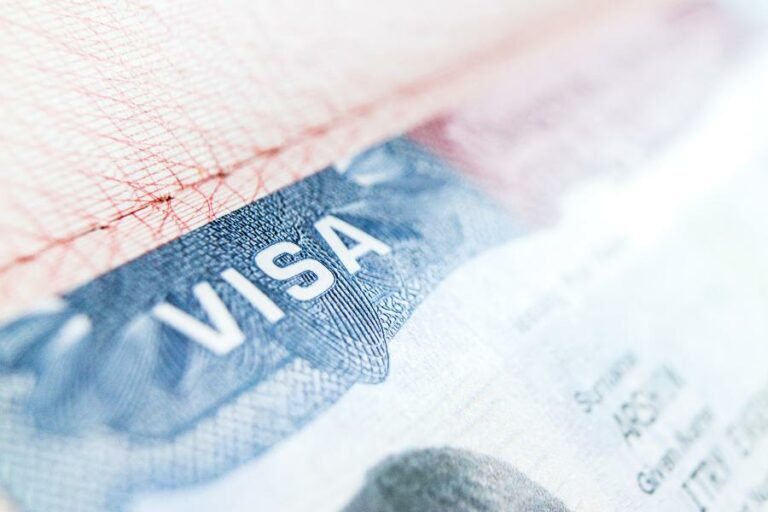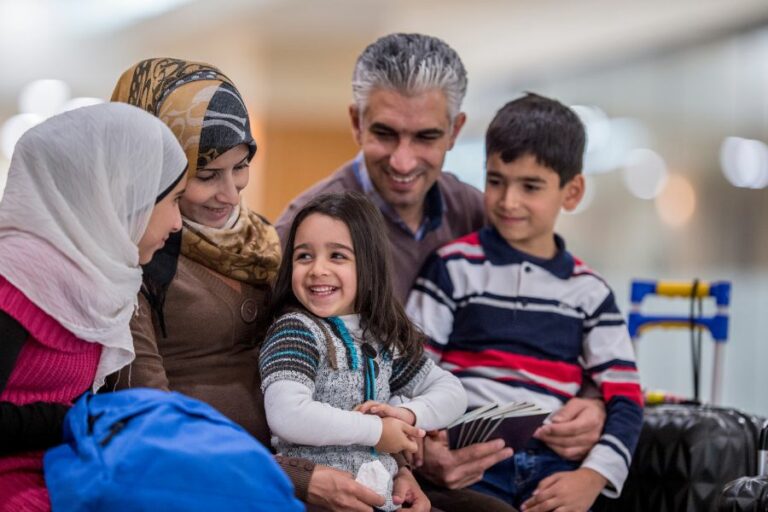K-1 Fiancé Visa: 9 Important Things To Know
Eligibility for those in a hurry: To apply for a K-1 visa, the foreign partner must live outside of the United States, be legally unmarried and eligible for marriage, have had a face-to-face meeting with their U.S. citizen partner in the past two years, and must not have serious criminal convictions. You must also marry within 90 days of arriving (before visa expires), then you can apply for adjustment of status to a green card.
Thinking to bring your fiancé to the United States under a K-1 visa requires understanding more than just the romantic aspect of your relationship. In the U.S., immigration officials take a very close and serious look at these applications. The reason is that sometimes, people marry to get around U.S. immigration laws for a green card. In immigration terms, such marriages are seen as fraudulent.
This situation creates a big difference between the dream of marrying for love and the reality of immigration laws. The K-1 visa process is complex, and couples have to prove that their relationship is real and legal.
In our article, we’re going to cover 9 unique topics that can help you navigate the process.
1. Your Love Story Needs a 2-Year Chapter for the K-1 Visa
The K-1 visa, often referred to as the fiancé visa, includes a crucial condition called the 2-year rule1. This rule serves as a testament to the authenticity of the relationship between the U.S. citizen and their foreign fiancé. It requires that the couple must have met in person at least once within the past two years.
This in-person meeting is key to demonstrating that their relationship is not just an online or long-distance interaction, but one that has materialized in the real world. It’s important to note that while the rule requires a physical meeting within two years, it does not demand that the couple have been in a continuous relationship for the entire duration. The essential aspect is the evidence of having met in person within the specified timeframe.
2. Keeping it Digital, Sometimes K-1 Visa Love Doesn’t Need a Meetup
While an in-person meeting is required for obtaining a K-1 visa, there are certain circumstances under which you may be excused from this requirement.
This can happen if meeting face-to-face would go against important traditions or long-standing customs in your partner’s culture or society1. For example, if their religion or cultural practices don’t allow meeting before marriage. If this is your situation, you’ll need to show proof, like letters from religious leaders, or statements from friends and family, to explain these customs and how you’re following them.
Another way is if there’s a big problem, or significant difficulties, that makes it impossible for you two to meet. This could be because of political issues in your partner’s country, travel restrictions, as was COVID at the time, or health problems that stop either of you from traveling. If you’re in this kind of tough situation, you’ll need to provide clear evidence, like documents or medical records, to show why it’s so hard for you to meet. This helps explain your unique situation when applying for the visa.
3. Love’s Plus-Ones – Taking Your Children With You
Taking your children with you for your big day is not open for discussion and if they are under 21, they sure will join you.
The unmarried minor children of the foreign national fiancé are eligible for a K-2 visa.
“Eligible children of K-1 applicants may apply for K-2 visas. You must submit a separate DS-160 and pay the MRV fee for each child.”2
This provision ensures that families can travel together or be reunited in the United States.
The children have the flexibility to travel with the K-1 visa holder or join them later in the U.S. However, this follow-to-join benefit is time-sensitive. It’s crucial that the children make their journey within one year from when the K-1 visa was issued to their parent. If the children are unable to travel within this one-year period, the process becomes more complex. After the year mark, they will need to apply for and obtain a separate immigrant visa to enter the U.S. Therefore, it’s vital for families to plan accordingly to ensure a smooth transition for all family members.
4. K-1 Visa When Cupid’s a Middleman (Marriage Broker)
In the journey of love and marriage, especially when it involves partners from different countries, the role of an international marriage broker can be a key factor in the U.S. visa process. This is particularly relevant for U.S. citizens who have met their foreign national fiancé through such services. When a U.S. citizen decides to bring their foreign fiancé to the United States, and their meeting was facilitated by an international marriage broker, this detail must be disclosed to the U.S. Citizenship and Immigration Services3.
The process involves the U.S. citizen petitioner acknowledging the involvement of an international marriage broker while filing the petition for a foreign fiancé. But what exactly is an international marriage broker? This term refers to any corporation, partnership, business, individual, or other legal entity, irrespective of its organization under U.S. laws, that charges fees for providing dating, matrimonial, or matchmaking services. These entities facilitate the introduction between U.S. citizens or lawful permanent residents and foreign nationals, aiming to help individuals from different countries connect for a serious relationship. The broker’s role is not just limited to providing personal contact information but may also include aiding in communication between the individuals involved.
As international relationships continue to blossom, recognizing the part of these brokers in the visa application process becomes an essential step for many aspiring couples.
5. Age Is Just a Number, But It Matters for Your K-1 Visa
In the world of international love, where a U.S. citizen and a foreign national are engaged, the age difference between the two can sometimes raise eyebrows in the immigration process. When a U.S. citizen files a petition to bring their foreign fiancé to the United States, and there’s a significant age gap between them, it’s not uncommon for their application to be looked at more closely by U.S. immigration officers4. The concern from the immigration perspective is the possibility that the relationship might primarily be for the purpose of gaining immigration benefits, rather than being based on genuine affection.
To address this extra scrutiny, it’s crucial for couples with a large age difference to be prepared, even though is not strictly quantified, it is especially important for couples with an age difference of 10-20 years.
They should gather and present strong evidence that demonstrates their commitment to each other. This includes showing that their intention to marry is sincere and that their relationship is a good-faith one – in other words, it’s not merely a means to an end for immigration purposes. Such evidence could range from shared financial accounts and property, photographs and correspondence that chronicle their relationship, to testimonies from friends and family affirming the authenticity of their bond. This preparation is key in proving to the immigration authorities that despite the age difference, their union is rooted in love and mutual respect.
6. Same Sex, Same Love, Same Rights
The landscape of immigration rights has evolved significantly, especially for same-sex couples who now enjoy the same legal privileges as heterosexual couples in the United States. This change follows the ruling on the Defense of Marriage Act (DOMA). For those in same-sex marriages, particularly where one partner is a foreign national, this evolution in law opens up new pathways for immigration. If your marriage occurred before the DOMA ruling, your foreign spouse is now eligible to apply for an Adjustment of Status. This process includes filing the I-130 petitions and, if done correctly with all the necessary supporting documents, can lead to obtaining a green card5.
However, it’s crucial to be aware of specific challenges that might arise for your foreign spouse due to the nature of being in a same-sex relationship. Before submitting an application for a marriage visa, understanding these potential hurdles is key. These could range from legal issues in their home country to cultural barriers that might impact the visa process. Being informed and prepared for these unique challenges ensures a smoother journey through the immigration process, reinforcing the commitment to equality and recognition for all couples, regardless of their sexual orientation.
7. Ready, Set, I Do! The K-1 interview
The K-1 visa interview is a pivotal moment for couples seeking to establish their lives together in the United States. It involves a series of in-depth and pointed questions, aimed at unraveling the true nature of the relationship. The success of the visa application hinges significantly on how these questions are answered. Immigration officers focus on various aspects of the couple’s relationship, including their shared history, future plans, and mutual understanding. This intense scrutiny is not just a routine procedure, it’s a critical evaluation to distinguish genuine, heartfelt relationships from those formed solely for the purpose of immigration.
Navigating the K-1 visa interview requires thorough preparation, honesty, and transparency from the applicants. The process can be intimidating, with immigration officers meticulously examining every detail of the relationship. However, this rigorous approach is essential to maintain the integrity of the immigration system. For couples, the key lies in being open and genuine in their responses, providing clear and honest insights into their relationship. It’s not just about giving the ‘right’ answers; it’s about demonstrating the authenticity and depth of their bond, a task that requires both emotional honesty and factual clarity.
8. Partners in Crime: When Your Fiancé Has a Criminal Record
Bringing a fiancé to the U.S. on a K-1 visa can become complicated if your fiancé has a criminal record. According to U.S. immigration law (specifically 8 U.S.C. § 1182), a criminal record can make a person inadmissible, meaning they might be ineligible not only for the visa but also for entry into the United States6. This applies even to crimes that have been expunged from their record. The presence of a criminal history necessitates additional scrutiny and can significantly impact the visa application process, potentially leading to a denial based on the nature and severity of the offenses recorded.
However, there are options that might still allow a fiancé with a criminal past to be granted a K-1 visa. Firstly, there’s the “sentencing exception.” This applies if the fiancé was convicted of only one crime and meets certain other criteria, offering a potential pathway to overcome the inadmissibility hurdle. Secondly, if the sentencing exception is not applicable, the fiancé may still have the option to request a waiver of inadmissibility. This waiver, if granted, would allow them to proceed with the K-1 visa application despite their criminal record. Both of these options require careful navigation of legal procedures and often involve detailed legal arguments to demonstrate that the fiancé should be allowed to enter the U.S.
9. You Only Have 90 Days To Get Married
The 90-day rule associated with the K-1 visa, also known as the “fiancé(e) visa,” mandates that the foreign fiancé(e) must marry their U.S. citizen sponsor within 90 days of entering the United States7.
This period is critical and strictly enforced to ensure the visa is used for its intended purpose—facilitating marriage between the foreign fiancé(e) and their U.S. partner. If the marriage does not occur within this timeframe, the foreign national is expected to leave the country to avoid potential deportation and negative impacts on future immigration applications.
Following the marriage within the stipulated 90 days, the foreign spouse is eligible to apply for an Adjustment of Status to become a lawful permanent resident, a process that involves additional paperwork and an interview with U.S. Citizenship and Immigration Services (USCIS).
This rule is a key component of the U.S. government’s effort to prevent visa fraud and confirm the authenticity of the couple’s relationship.
Related: How long does it take after marriage to get a green card?
FAQ on K-1 Visa
How long does it take to process a K-1 visa? The K-1 visa processing time can vary widely, typically ranging from several months to over a year, depending on factors such as the specific U.S. embassy or consulate’s workload and the completeness of the application.
How much does a K-1 visa cost? The total cost for a K-1 visa can range from approximately $1,000 to $2,000, including the filing fee for the I-129F petition ($535), the visa application fee ($265), medical examination fees, and additional costs for necessary documents and travel.
What are the requirements for a K-1 visa?
- The U.S. citizen and foreign partner must be legally free to marry.
- The couple must intend to marry within 90 days of the foreign partner’s arrival in the U.S.
- The couple must have met in person at least once in the last two years.
- The U.S. citizen sponsor must meet certain income requirements to financially support the foreign partner.
- The foreign partner should not have a significant criminal record.
- The couple must provide evidence of a bona fide relationship.
References:
- https://www.uscis.gov/family/family-of-us-citizens/visas-for-fiancees-of-us-citizens
- https://br.usembassy.gov/visas/immigrant-visas/fiancee/
- https://www.uscis.gov/sites/default/files/document/memos/imbra072106.pdf
- https://www.marriagevisaattorney.com/age-differences-become-issue-applying-k1-fiance-visa/
- https://travel.state.gov/content/travel/en/us-visas/immigrate/family-immigration/nonimmigrant-visa-for-a-fiance-k-1.html
- https://www.law.cornell.edu/uscode/text/8/1182
- https://www.uscis.gov/i-129f








